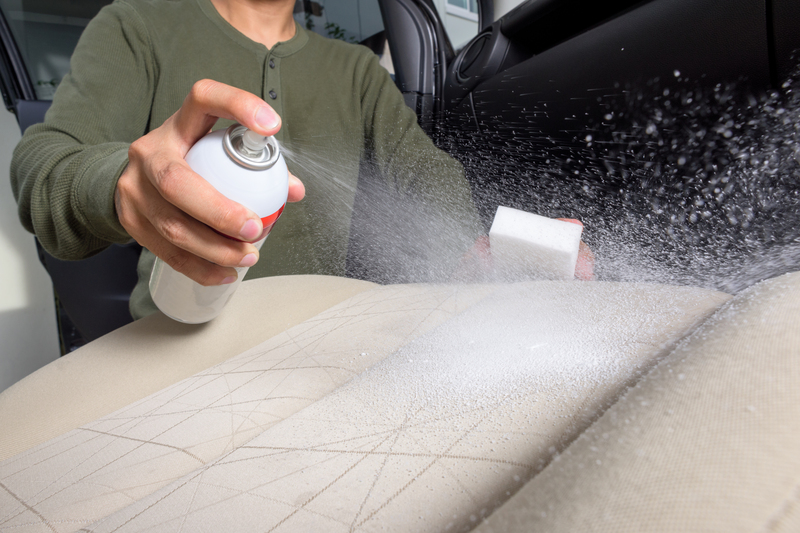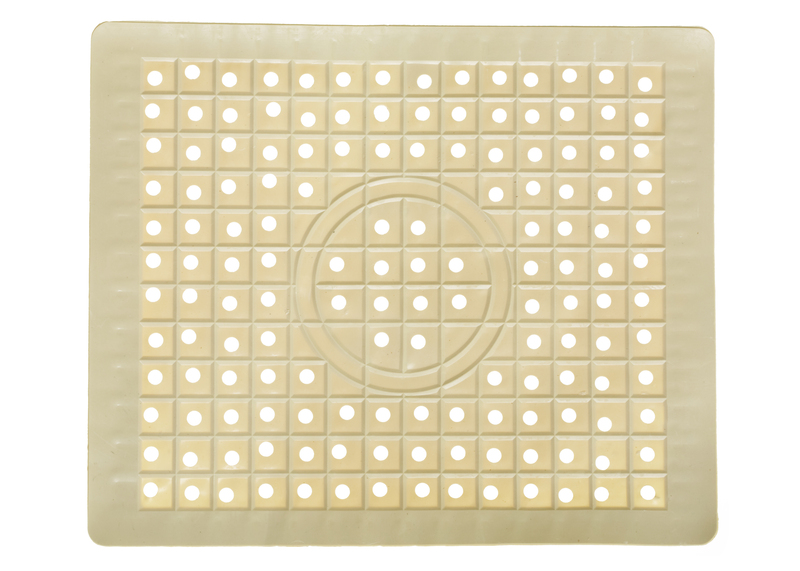Pro-Level Car Detailing: Secrets You Need to Know
Posted on 11/06/2025
Pro-Level Car Detailing: Secrets You Need to Know
Unlock the expert tips and techniques behind professional-grade car detailing. Whether you're passionate about car care, looking to prolong your vehicle's lifespan, or interested in maximizing resale value, this comprehensive guide reveals everything you need to know about pro-level car detailing.

Table of Contents
- Why Car Detailing Matters
- Essential Tools & Materials
- The Pro Detailing Process Revealed
- Interior Detailing Secrets
- Exterior Detailing Techniques
- Engine Bay Detailing
- Protecting Your Work
- Common Mistakes to Avoid
- FAQs: Pro-Level Detailing
Why Car Detailing Matters
Car detailing is far more than a simple wash and vacuum. It's the meticulous process of cleaning, restoring, and finishing a vehicle's interior and exterior to achieve a showroom shine.
- Maintains Value - Regular auto detailing safeguards a car's resale value by preserving paint, upholstery, and trim.
- Protects Surfaces - Using pro-level car cleaning techniques shields your vehicle from harmful contaminants like road salt, UV rays, and acid rain.
- Boosts Aesthetics - The visual impact of a thoroughly detailed car is impossible to overlook; it simply looks and feels newer.
- Improves Comfort - A well-maintained cabin elevates your driving experience.
- Health & Safety - Deep-cleaning eliminates allergens, bacteria, and lingering odors that can negatively impact health.
When you master the secrets of professional car detailers, you'll keep your vehicle in top condition and set it apart from the average car on the road.
Essential Tools & Materials for Pro-Level Detailing
Every professional car detailing job begins with assembling the right arsenal. Investing in quality tools and products is key for achieving great results.
Must-Have Tools
- Dual Action (DA) Polisher - Cuts, polishes, and finishes paint with minimal risk of damaging the surface.
- Microfiber Towels - These soft, absorbent towels are essential for both cleaning and drying without scratching surfaces.
- Brush Kits - A variety of gentle brushes help agitate dirt in crevices, emblems, and wheels.
- Shop Vac or Wet/Dry Vacuum - For thorough interior cleaning and liquid extraction.
- Foam Cannon or Pressure Washer - Offers an efficient, swirl-minimizing vehicle wash.
- Detailing Clay Bar - Removes tough, bonded contaminants from paint, glass, and chrome.
- Applicator Pads - For applying waxes, sealants, and conditioners evenly.
Chemicals and Consumables
- pH-balanced Car Shampoo - Safe on wax and coatings, it lifts dirt without harsh chemicals.
- Iron Remover & Tar Remover - Targets stubborn metallic and petroleum deposits.
- All-Purpose Cleaner (APC) - Versatile, for both interior and exterior surfaces.
- Trim & Tire Dressings - Restores dark, rich coloring and adds protection.
- Glass Cleaner - Streak-free formulas for perfect visibility.
- Interior and Leather Conditioners - Prevents drying, fading, and cracking.
- Paint Sealant or Ceramic Coating - Provides long-lasting gloss and hydrophobic protection.
The Pro Detailing Process Revealed
Professional auto detailers approach every job with a careful step-by-step process. Let's uncover the most important stages that make a measurable difference:
1. Pre-Wash & Decontamination
- Always start with a gentle rinse to remove loose dirt and debris.
- Apply a foam pre-soak with a foam cannon or sprayer, allowing it to dwell and encapsulate grime.
- Use a two-bucket wash system (one for wash, one for rinse) with grit guards to minimize swirl marks.
Secret: Professionals never wash in direct sunlight - it causes soap and water to dry too quickly, leading to water spots.
2. Paint Decontamination
- After washing, use a clay bar (and optional iron remover) to remove embedded contaminants.
- Work in small sections, lubricating the surface with a detailing spray to prevent marring.
Fact: Even a new car benefits from clay barring. Professionals check the paint by touch--if it feels rough, contaminants are present.
3. Paint Correction (Polishing)
- Assess the paint for scratches, swirl marks, and oxidation.
- Choose an appropriate cutting or polishing pad and compound for your DA polisher.
- Work methodically in small areas, keeping the pad moist and clean to prevent holograms or burns.
- Follow with a finishing polish to refine the surface to a brilliant gloss.
Pro Tip: Always use a paint depth gauge to ensure you aren't over-polishing.
4. Protection & Finishing
- Apply paint sealant, wax, or ceramic coating for lasting shine and protection against the elements.
- Dress tires and trim for a just-detailed appearance.
- Protect glass using a hydrophobic glass sealant for water beading and enhanced visibility.
Secret: Ceramic coatings offer the longest-lasting and most hydrophobic protection available for DIY enthusiasts.
Interior Car Detailing Secrets
Detailing the interior is about deep cleaning and preserving every surface, from carpets to dashboards. A pro-level detail pays attention to the smallest details to create a cabin that looks, feels, and smells new.
Vacuuming Like a Pro
- Remove all mats and large debris first.
- Use a crevice tool to reach seat rails, between cushions, and under pedals.
- Utilize a brush attachment for delicate surfaces like vents and dashboards.
Deep Cleaning & Stain Removal
- Use a purpose-specific interior cleaner or APC for fabric, vinyl, and leather--never use glass cleaner or harsh chemicals!
- Steam cleaners are highly effective for killing bacteria and lifting stains from textiles.
- For stubborn stains, treat with a designated stain remover and agitate gently with an upholstery brush.
Protecting and Conditioning
- After cleaning, apply UV-blocking conditioners to prevent fading, cracking, and drying.
- Don't forget non-glare dressings for dashboards and door panels.
- Use leather balm or conditioner to keep seats supple and luxurious.
Pro Secret: Many professional detailers finish interiors by misting a "new car scent" deodorizer or using an ozone generator to eliminate stubborn odors at the molecular level.
Exterior Car Detailing Techniques
Achieving a flawless, mirror-like finish isn't reserved for the pros. By mastering these pro-level auto detailing tips, every enthusiast can achieve jaw-dropping results.
Wheel and Tire Perfection
- Clean wheels and tires separately using a dedicated wheel brush and pH-neutral wheel cleaner.
- Work one wheel at a time, starting with the least dirty to minimize spreading grit.
- Dry thoroughly before applying tire dressing for an even, natural look.
Glass and Chrome Care
- Use a high-quality, streak-free glass cleaner applied with a clean microfiber towel.
- Polish chrome trim lightly--avoid anything abrasive that could scratch.
- Treat exterior mirrors and headlight lenses with protective sealants to guard against oxidation and water spots.
Paint Finishing Touches
- Inspect paint under different lighting to ensure swirl marks or hazing are fully corrected.
- Remove all wax or sealant residues using a clean towel and quick detailer spray.
- Buff gently, avoiding circular motions on soft paint finishes.
Engine Bay Detailing: The Overlooked Secret
Engine detailing isn't just about aesthetics--it makes it easier to spot leaks and improves resale value. Here's how the pros handle it safely:
- Cover sensitive components (alternator, exposed wiring, air intake) with plastic bags.
- Degrease with an engine-safe cleaner, applied to a cool engine bay.
- Agitate stubborn buildup using brushes of various sizes.
- Rinse gently with low-pressure water, then dry with compressed air or a microfiber towel.
- Apply a dressing to plastic and rubber components for a factory-fresh finish.
Pro Tip: Never use high-pressure water directly on electrical components--mist and wipe for best results.
Protecting Your Pro-Level Detailing Results
Lasting results depend on sealing in your hard work. Here's how to get that just-detailed look to stay longer:
- Wash with a pH-neutral shampoo and the two-bucket method every 1-2 weeks.
- Apply a quick detailer or spray wax after every wash to boost gloss and protection.
- Vacuum and clean the interior frequently, targeting high-traffic zones like mats and door panels.
- Reapply tire and trim dressing as needed to maintain a deep, rich finish.
- Renew ceramic coatings or professionally applied sealants as recommended by the manufacturer.
Pro Insight: Keep a spray bottle of detailer and microfiber towel in your trunk for quick touch-ups of bird droppings, sap, or dust.
Common Car Detailing Mistakes to Avoid
Even seasoned enthusiasts can make errors that compromise results or damage the finish. Awareness is your best protection.
- Skipping Pre-Wash - Always rinse dirt off before hand washing to prevent scratching.
- Using Household Detergents - Never use dish soap, as it strips wax and dries paint and rubber.
- Improper Drying Techniques - Air drying or towels not designed for cars can mar paint with micro-scratches.
- Neglecting the Nooks - Door jambs, trunk sills, pedals, and vents are often overlooked but gather the most grime.
- Cross-contaminating Surfaces - Use dedicated towels and brushes for paint, interior, wheels, and glass.
- Forgetting Protection Steps - Sealing paint without waxing or using low-quality protective products undermines your effort.
Remember: Each surface in your vehicle has different needs--choose your cleaners, tools, and techniques accordingly.
Frequently Asked Questions About Pro-Level Car Detailing
How often should I perform professional car detailing at home?
For most vehicles, a full detail every 4-6 months keeps your car in top shape. More frequent maintenance details (quick washing, tire dressing, light vacuuming) help preserve results year-round.
Should I use wax, sealant, or ceramic coating?
- Carnauba wax gives a deep shine that lasts a few months--perfect for show cars or those who love frequent care.
- Paint sealants offer synthetic, six-month protection with enhanced durability.
- Ceramic coatings provide the ultimate shield (often 1-3 years of hydrophobic, glossy protection) and are recommended for those seeking low-maintenance, pro-level results.
Is machine polishing necessary for professional auto detailing?
While hand polishing can improve gloss, machine polishers (especially DA polishers) are essential for fixing swirls, scratches, and oxidation. Just remember to practice on less visible panels before attacking the whole car.
What is the biggest secret behind pro detail results?
Preparation and patience. Professionals never cut corners--they spend extra time on surface prep, work panel-by-panel, and always use premium products. The difference is in the details!

Final Thoughts: Achieve Pro-Level Car Detailing at Home
By following the secrets and techniques used by top professional auto detailers, any car enthusiast can achieve that stunning, envy-worthy finish. It all comes down to using the right products, delicate tools, and carefully honed steps. Work slowly and methodically, and invest in quality supplies--the results will speak for themselves every time you hit the road.
Whether you're restoring a classic, maintaining a daily driver, or getting your car ready for sale, mastering pro-level car detailing not only elevates your vehicle's looks and value--it delivers pride of ownership that's second to none. Ready to get started? Unlock the next level of car care today!




